| Share or view as webpage | Update preferences |
| DNR News |
| July 3, 2025 Contact: Jeff Corser (Lower Peninsula), 989-385-5617 or Celeste Chingwa (Upper Peninsula), 906-250-2466. Celebrate safely: Prevent wildfires this Independence Day 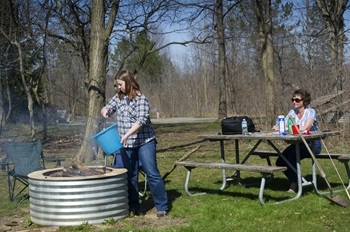 As you plan for a fun-filled Fourth of July holiday, whether it includes fireworks, camping, off-roading or simply tackling projects around the yard, don’t forget to take precautions to prevent wildfires.“Nine out of 10 wildfires are caused by people,” said Paul Rogers, fire prevention specialist with the Michigan Department of Natural Resources. “With fireworks, campfires and outdoor equipment in use during the holiday, it’s important to stay alert and take simple steps to protect people, property and the outdoor places we love.”Fire danger has been on the lower side this year due to regular rain, but that doesn’t mean the risk is zero, especially with fireworks. There is currently an area of drought extending from Muskegon to Saginaw Bay (as shown on this U.S. Drought Monitor map) that is experiencing above-normal drought conditions – everyone is advised to use great caution in that area.“Fireworks can ignite dry grass or brush in an instant,” Rogers said. “Avoid aiming them into wooded areas or tall vegetation. And always check your local ordinances – many communities only allow fireworks on the holiday itself and the days immediately before and after.” Rogers encouraged Michigan residents and visitors to put safety first with any celebrations or yardwork.Fireworks safetyIf lighting fireworks on grass, wet the area first and keep a hose and water bucket nearby.Soak used sparklers and spent fireworks in water before throwing away.Sky lanterns and aerial fireworks are not allowed in Michigan state parks or recreation areas.Campfire safetyUse a designated fire ring on bare soil, away from trees and low-hanging branches.When extinguishing your fire, drench it with water, stir the ashes and repeat until the embers are cool to the touch.Be cautious of floating embers, which can ignite dry grass, leaves or brush.Debris burningCheck current burn permits; burning isn’t allowed on hot, dry or windy days.Keep burn piles manageable and no larger than 3 feet high and wide.Always have a water source nearby.Instead of burning, consider composting or recycling yard debris.Fires should be at least 10 feet from logs, stumps and other flammable materials.For more information on fire prevention and safe burning practices, visit Michigan.gov/FireManagement.Note to editors: Accompanying photos are available below for download. Caption information follows.Practice fire safety this holiday weekend. |
| Following the unprecedented March 28-30 ice storm in northern Michigan, Department of Natural Resources teams from across the state have been working tirelessly to assess the damage and continue the monumental cleanup. All impacted state parks and boating access sites have reopened. Find a map and dashboard with the latest status of state-managed trails and state forest campgrounds; an interactive map; safety updates; and more on the DNR’s ice storm response page. |
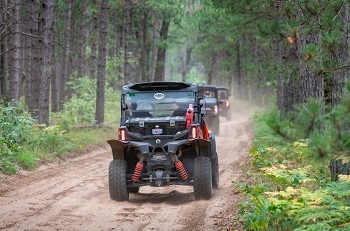 Off-road vehicles are fun year-round, but activity in Michigan tends to increase around the Fourth of July holiday as people head to trails and ORV scramble areas to enjoy world-class riding experiences.Keeping safety in mind is vital on any ride, for you and others. According to 2023 statewide ORV crash data, 93% of ORV fatalities could have been prevented. These crashes and injuries primarily were due to excessive speed and a lack of helmet/seat belt use. Parents are reminded, too, that they must have visual supervision of all children under the age of 16 when those children are operating an ORV.“Always ride within your and the machine’s capabilities,” said Cpl. Mike Hearn, DNR law enforcement ORV and snowmobile specialist. “When you ride too fast, you are more likely to lose control when hitting even the smallest bump or trying to make turns or stop.”All ORV operators are urged to “Ride Right” and keep other important guidance in mind:Ride at a safe speed.Ride sober.Ride on the right side of the trail.Keep lights on when riding.Always wear a helmet.Please keep in mind that about 60% of motorized and nonmotorized DNR-managed trails in northern Michigan remain temporarily closed due to effects of the March 28-30 ice storm. For status updates on state-managed facilities, trails and forest roads, refer to the map and dashboard on the DNR’s ice storm response page.Additionally, ORV operators who are transporting children should refer to the ORV manufacturer owner’s manual regarding use of car seats or boosters. Off-road vehicles are fun year-round, but activity in Michigan tends to increase around the Fourth of July holiday as people head to trails and ORV scramble areas to enjoy world-class riding experiences.Keeping safety in mind is vital on any ride, for you and others. According to 2023 statewide ORV crash data, 93% of ORV fatalities could have been prevented. These crashes and injuries primarily were due to excessive speed and a lack of helmet/seat belt use. Parents are reminded, too, that they must have visual supervision of all children under the age of 16 when those children are operating an ORV.“Always ride within your and the machine’s capabilities,” said Cpl. Mike Hearn, DNR law enforcement ORV and snowmobile specialist. “When you ride too fast, you are more likely to lose control when hitting even the smallest bump or trying to make turns or stop.”All ORV operators are urged to “Ride Right” and keep other important guidance in mind:Ride at a safe speed.Ride sober.Ride on the right side of the trail.Keep lights on when riding.Always wear a helmet.Please keep in mind that about 60% of motorized and nonmotorized DNR-managed trails in northern Michigan remain temporarily closed due to effects of the March 28-30 ice storm. For status updates on state-managed facilities, trails and forest roads, refer to the map and dashboard on the DNR’s ice storm response page.Additionally, ORV operators who are transporting children should refer to the ORV manufacturer owner’s manual regarding use of car seats or boosters. |
Do your part to ensure everyone returns home safely; read more about ORV safety at Michigan.gov/RideRight.
For more on where to ride and ORV laws in Michigan, visit Michigan.gov/ORVInfo.
June 5, 2025 Start protecting your favorite places from invasive species during PlayCleanGo Awareness Week, June 7-14 Adopt some helpful habits you can use all year The Michigan Invasive Species Program is joining the North American Invasive Species Management Association to promote PlayCleanGo Awareness Week, taking place this year June 7-14. The annual event aims to educate outdoor enthusiasts on the importance of stopping the spread of invasive species while enjoying the great outdoors. 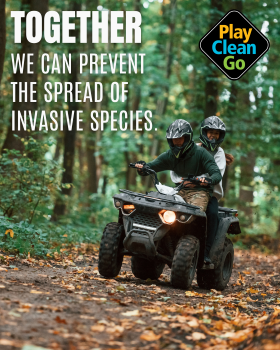 “Nearly 50% of endangered or threatened fish, wildlife and plants are at risk due to invasive species, which people unintentionally spread with their boots, tires, boats, firewood, pets and more,” said Joanne Foreman, Invasive Species Program communications specialist with the Michigan Department of Natural Resources. “But the good news is, by taking a few easy steps, everyone spending time in nature can be part of the solution.” “Nearly 50% of endangered or threatened fish, wildlife and plants are at risk due to invasive species, which people unintentionally spread with their boots, tires, boats, firewood, pets and more,” said Joanne Foreman, Invasive Species Program communications specialist with the Michigan Department of Natural Resources. “But the good news is, by taking a few easy steps, everyone spending time in nature can be part of the solution.”Adopting “PlayCleanGo” can help prevent the spread of invasive species on land and in the water. Here’s how it works: PLAY: Yes, play! Swim, hike, fish, ride, dance under the stars – have fun! CLEAN: Before you leave the trail, campground or shore, shake it out, brush it off, wipe it down or whatever it takes to remove dirt and debris from your shoes, gear and vehicle. If you have a watercraft, remember to drain tanks and bilges, too! GO: Head out on your next adventure, invasive species-free! Whether your plans include off-road vehicle riding, hiking, boating or climbing, helpful tips tailored to your favorite outdoor pursuits can be found at PlayCleanGo.org/Take-Action. If you are camping or heading to your weekend retreat, leave firewood at home and purchase what you need near or at your destination. The loss of Michigan’s native tree species due to invasive pests and diseases is increasing every year, and firewood movement plays a role in introducing them to new areas. ‘Three Free’ weekend is June 7-8 You can practice PlayCleanGo when fishing, ORVing or enjoying state parks during ‘Three Free’ weekend this Saturday and Sunday, June 7-8. It’s two full days when Michigan residents and out-of-state visitors can grab a fishing rod, ride the off-road trails and visit state parks, boating access sites and other outdoor locations — all free of charge. “The start of the summer season is a great time to add PlayCleanGo to your recreation routine,” said Foreman. “Pack a boot brush or scrub brush in your vehicle so you can easily clean shoes before you move on. Make it a habit to check clothes and gear before leaving a recreation area and wash your bike or ORV before the next trip. If you’re hitting the water, clean, drain and dry your watercraft and fishing equipment to stop aquatic hitchhikers!” National Trails Day Don’t forget that Saturday, June 7, is National Trails Day – look for service opportunities on local trails and remember to PlayCleanGo to keep them safe from invasive species. Check out some amazing trails at Michigan.gov/DNRTrails. Michigan’s Invasive Species Program is cooperatively implemented by the Michigan departments of Agriculture and Rural Development; Environment, Great Lakes, and Energy; and Natural Resources. Note to editors: Accompanying photos are available below for download. Caption information follows. PlayCleanGo graphics are available at https://playcleango.org/take-action/playcleango-toolkit/ 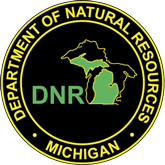   |
Michigan Department of Natural Resources sent this bulletin at 05/22/2025 09:54 AM EDT
Share or view as webpage | Update preferences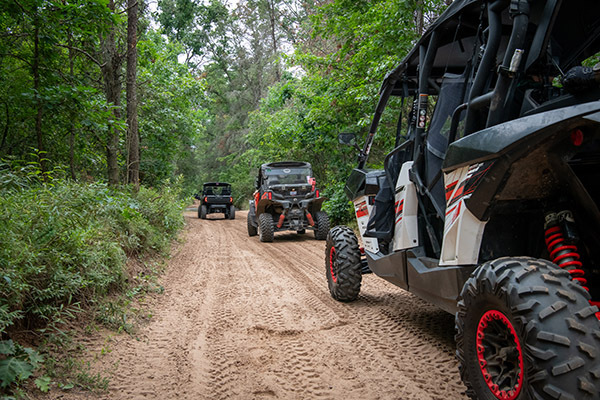 Be aware, ‘Ride Right’ for safe, responsible, off-road funAs off-road vehicle riding ramps up during Memorial Day weekend and throughout summer, it’s vital to keep safety top of mind. And following the massive March 28-30 ice storm in northern Michigan – a popular spot for ORV riding – it’s critical to “know before you go” when visiting the 12 affected counties.Please know that northern Michigan’s landscape may look different with more open spaces, damaged trees and natural debris.Storm-related closuresPlease respect all nonmotorized and motorized trail closures. If you’re visiting a reopened trail, stay on the trail corridor itself due to potential hazards in the surrounding forest, including numerous leaning trees and hanging tree limbs.Visit the ice storm response dashboard with the latest status (open, partially open, temporarily closed) of state parks, state-managed trails, boating access sites and state forest campgrounds. Find an interactive map, safety updates and more on the DNR’s ice storm response page.Ride RightAccording to 2023 statewide ORV crash data, 93% of ORV fatalities could have been prevented. These crashes and injuries were the result of excessive speed and a lack of helmet/seat belt use. Be aware, ‘Ride Right’ for safe, responsible, off-road funAs off-road vehicle riding ramps up during Memorial Day weekend and throughout summer, it’s vital to keep safety top of mind. And following the massive March 28-30 ice storm in northern Michigan – a popular spot for ORV riding – it’s critical to “know before you go” when visiting the 12 affected counties.Please know that northern Michigan’s landscape may look different with more open spaces, damaged trees and natural debris.Storm-related closuresPlease respect all nonmotorized and motorized trail closures. If you’re visiting a reopened trail, stay on the trail corridor itself due to potential hazards in the surrounding forest, including numerous leaning trees and hanging tree limbs.Visit the ice storm response dashboard with the latest status (open, partially open, temporarily closed) of state parks, state-managed trails, boating access sites and state forest campgrounds. Find an interactive map, safety updates and more on the DNR’s ice storm response page.Ride RightAccording to 2023 statewide ORV crash data, 93% of ORV fatalities could have been prevented. These crashes and injuries were the result of excessive speed and a lack of helmet/seat belt use. All ORV operators are urged to “Ride Right” and keep this important guidance in mind:Ride at a safe speed.Ride sober.Ride on the right side of the trail.Keep lights on when riding.Always wear a helmet.Do your part to ensure everyone returns home safely; read more about ORV safety at Michigan.gov/RideRight. For more on state ORV laws and where to ride, visit Michigan.gov/ORVInfo.Following a severe ice storm in northern Michigan, the Department of Natural Resources is assessing damage and conducting cleanup at several state parks, state park campgrounds, state forest campgrounds, boating access sites and state-managed trails. Find up-to-date information about closures, volunteer opportunities and more on the DNR storm recovery page. All ORV operators are urged to “Ride Right” and keep this important guidance in mind:Ride at a safe speed.Ride sober.Ride on the right side of the trail.Keep lights on when riding.Always wear a helmet.Do your part to ensure everyone returns home safely; read more about ORV safety at Michigan.gov/RideRight. For more on state ORV laws and where to ride, visit Michigan.gov/ORVInfo.Following a severe ice storm in northern Michigan, the Department of Natural Resources is assessing damage and conducting cleanup at several state parks, state park campgrounds, state forest campgrounds, boating access sites and state-managed trails. Find up-to-date information about closures, volunteer opportunities and more on the DNR storm recovery page. |
Everyone~~
We have good news to share!The closure we had announced on Thursday April 24th, 2025 for the Bill Nicholls (BN) Route at the intersection of M26 in Mass City, due to a culvert washout, has been lifted!
The DNR work crew completed the repair of the culvert washout and congruent trail today, Wednesday May 7th, 2025. They did a great job. The area looks wonderful. (See the pictures below of the finished work.)
PLEASE NOTE:
The section of the BN trail between M26 and Adventure Mine is still closed due to a heavy ice build-up on the bridge there. Hopefully the warmer weather we are due to have this week will take care of that! We will keep you posted.
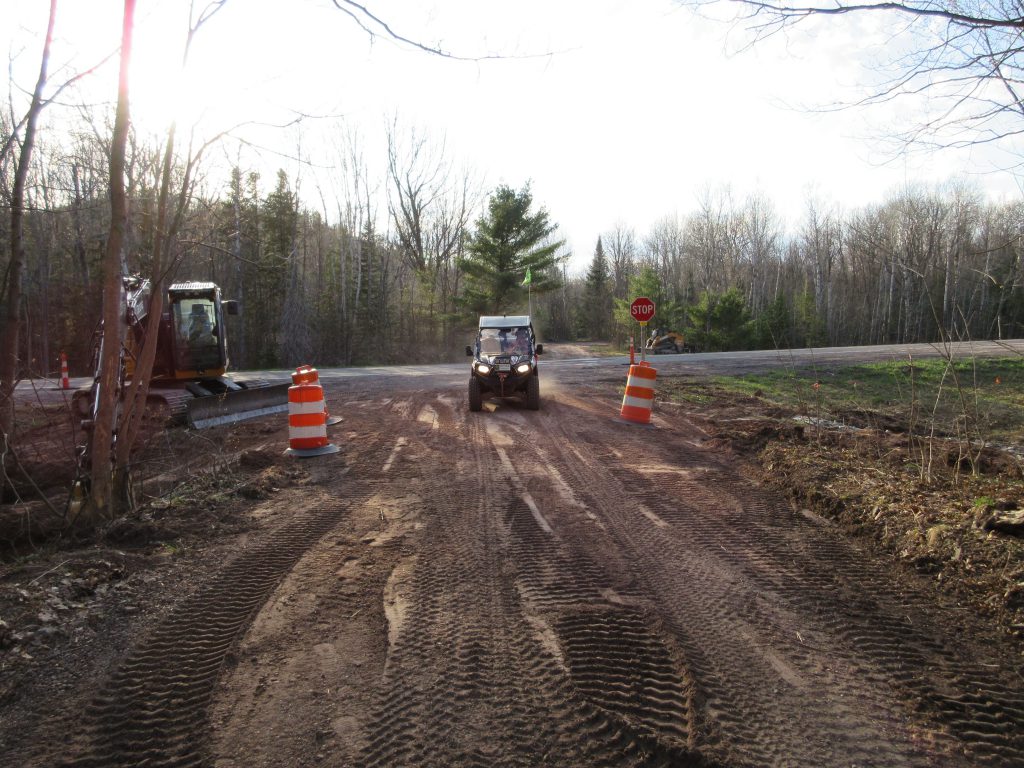
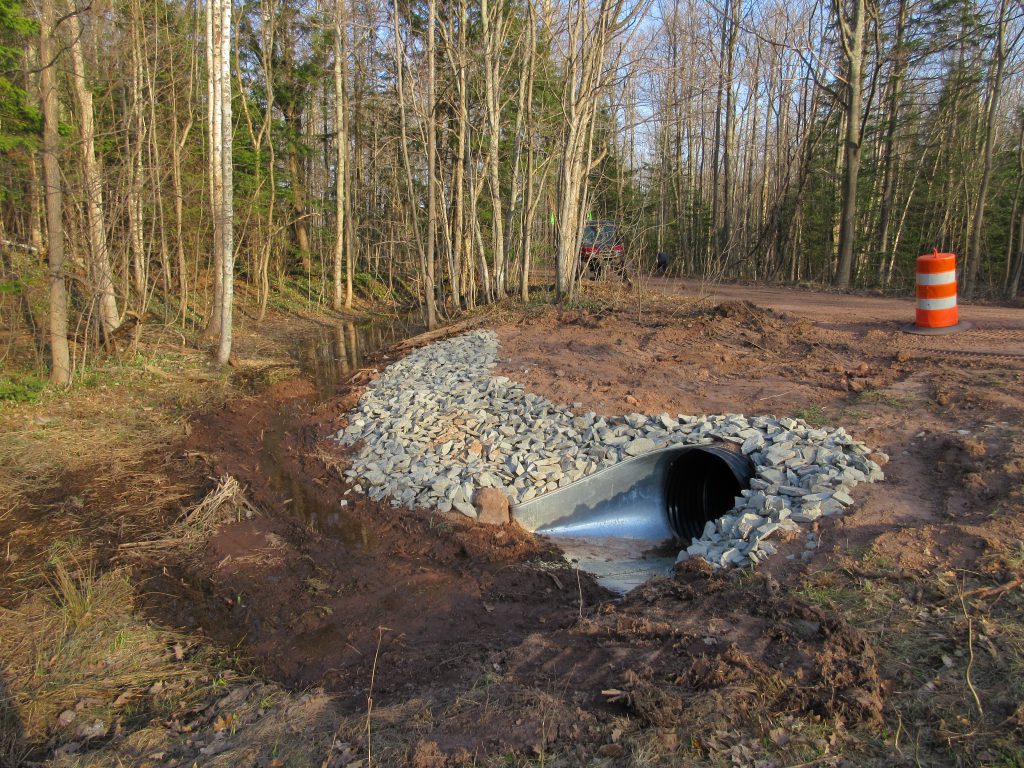
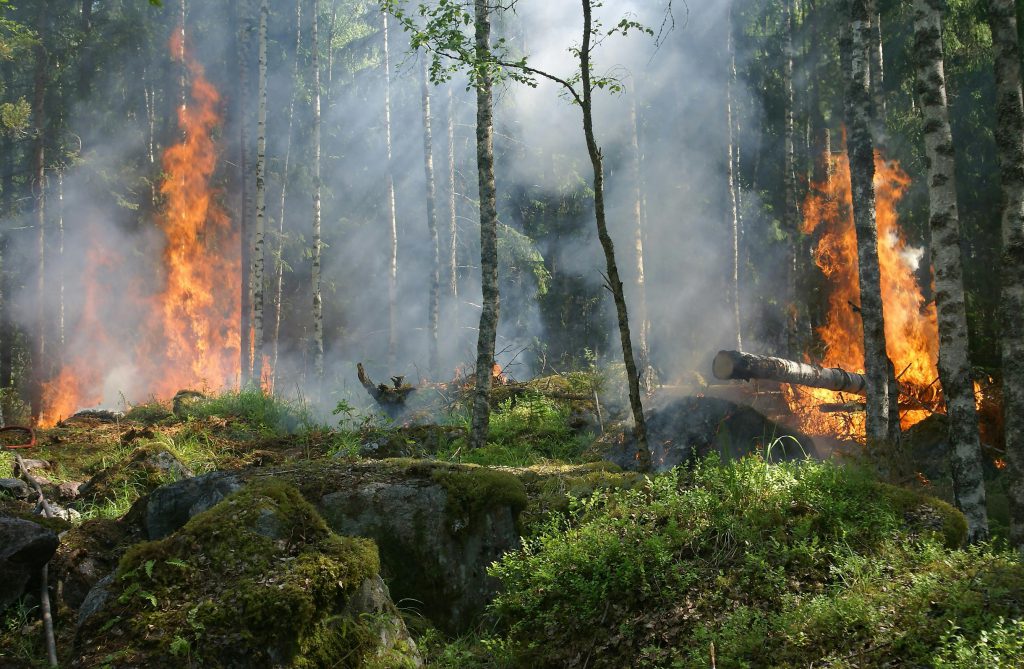
Fire danger is high in Upper Peninsula, northern Lower Peninsula; delay burning for now
The Michigan Department of Natural Resources is urging people in the Upper Peninsula and northern Lower Peninsula to refrain from outdoor burning over the next few days.
“Both areas will be seeing very dry, warmer and, at times, windy conditions through the weekend and into next week,” said Paul Rogers, DNR fire prevention specialist.
Permits for outdoor burning will not be issued in the Upper Peninsula for the time being. Campfires for warming and cooking purposes are allowed, but take precautions if you build one.
If you do have a cooking or warming fire:
- Make sure it is contained within a metal ring.
- Try not to start it until after 6 p.m., when winds die down and humidity rises.
- Clear nearby areas of any dry or dead vegetation.
- Keep a garden hose/pail of water nearby, along with a rake and shovel.
- Never leave a fire, even for a moment. When you’re done with a fire, make sure it is completely out. Douse the embers with water, stir the ashes and douse again.
- Always check for a permit at Michigan.gov/BurnPermit anytime you intend to light a debris fire.
Find more fire safety guidance at Michigan.gov/FireManagement.
Hello Eveyone!!!
The closure on the Bill Nicholls (BN) Route at the Misery River Bridge in Twin Lakes has been removed as of May 4th, 2025!
This is thanks to the combined efforts of MI-TRALEs and the Superior Snowmobile Club’s volunteers.
The bridge received these temporary repairs today to put an end to the inconvenience of the closure. The route is now open for use. Final repairs will be completed in the future.
President Don Helsel of MI-TRALE stated, “I would like to extend my sincere thanks to the volunteers from both the Superior Snowmobile Club and MI-TRALE for making this repair happen! It’s great to see what can be accomplished when proactive groups work together. Please become a member of these clubs! And remember to always ride right and ride safe.”
To follow are some pictures of the temporary fix work in progress and the completed repair of the Misery River Bridge:
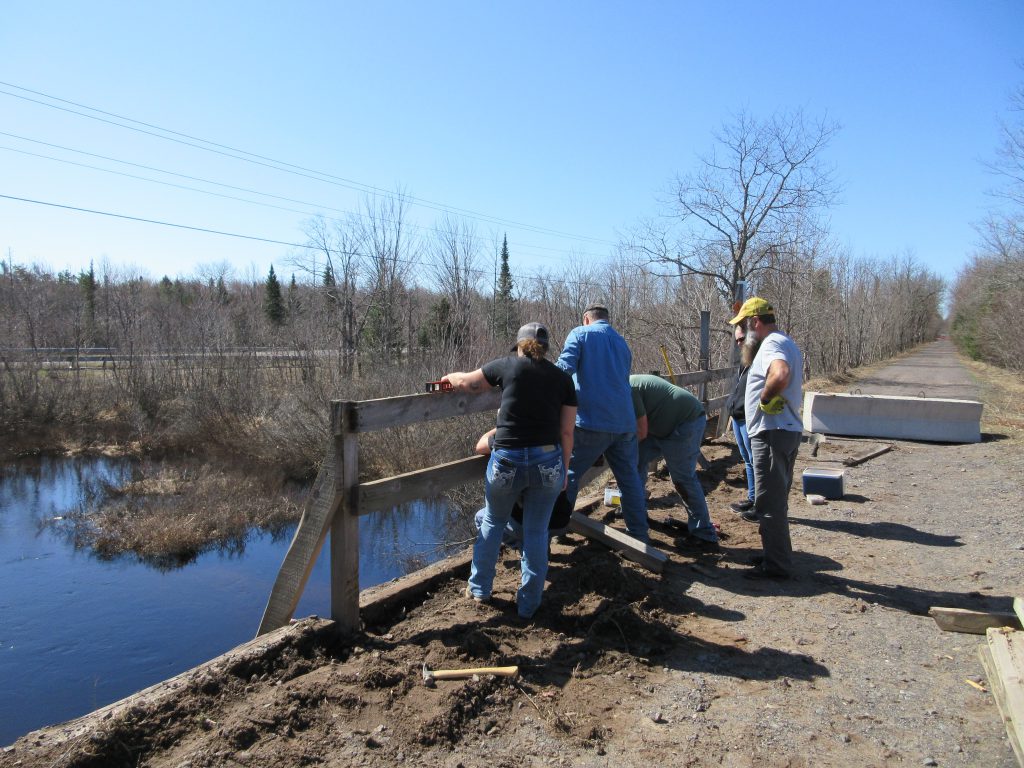
Beginning of Repair
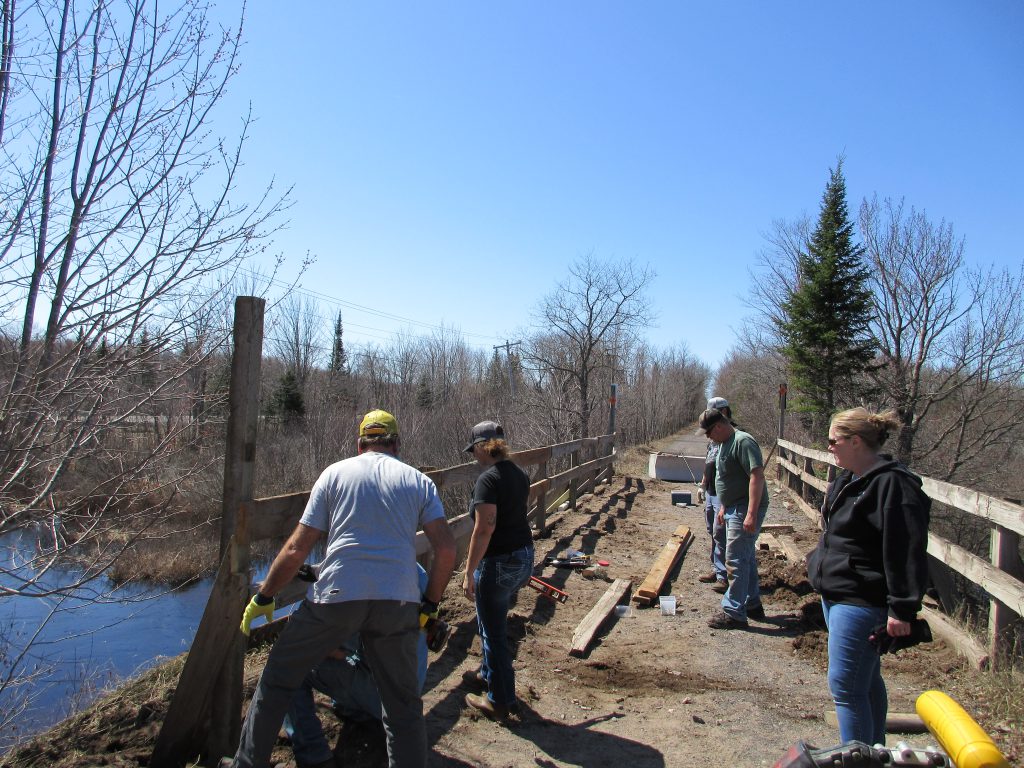
Workin on the Repair
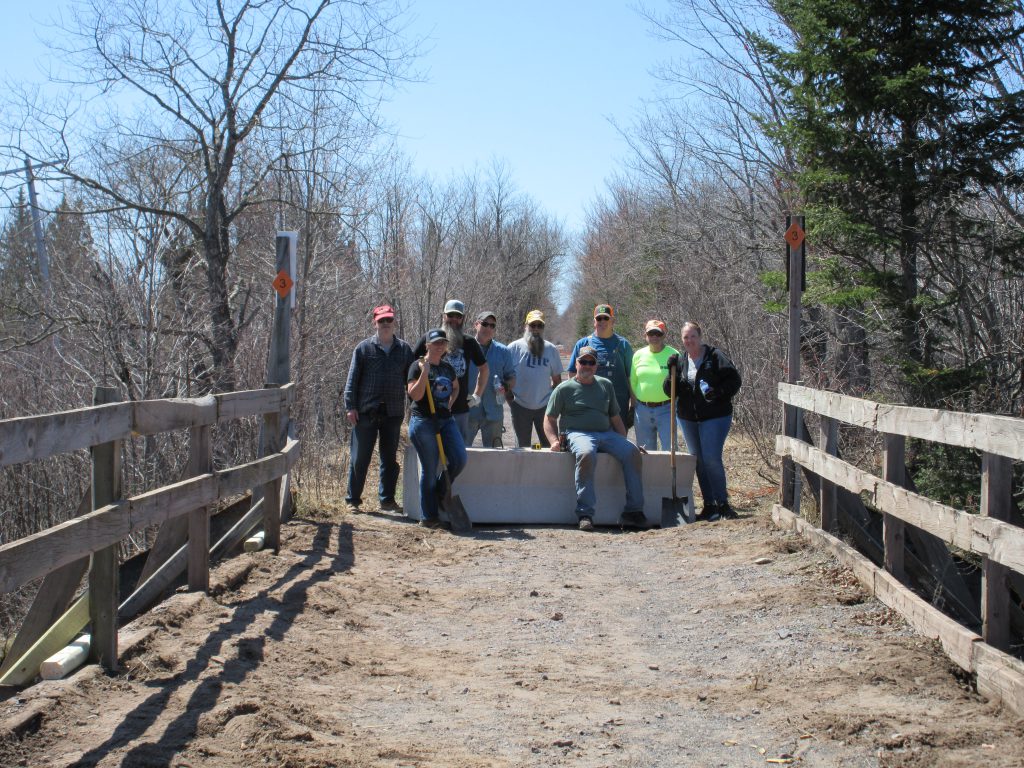
Finished- THANK-YOU for your PATIENCE
Good news to report here! Chris Kooyers is finished with the repair to the SB route. He has also put down a little more gravel.
The trail is open for use now!
HERE ARE A COUPLE OF PICTURES OF THE ALMOST COMPLETED REPAIR
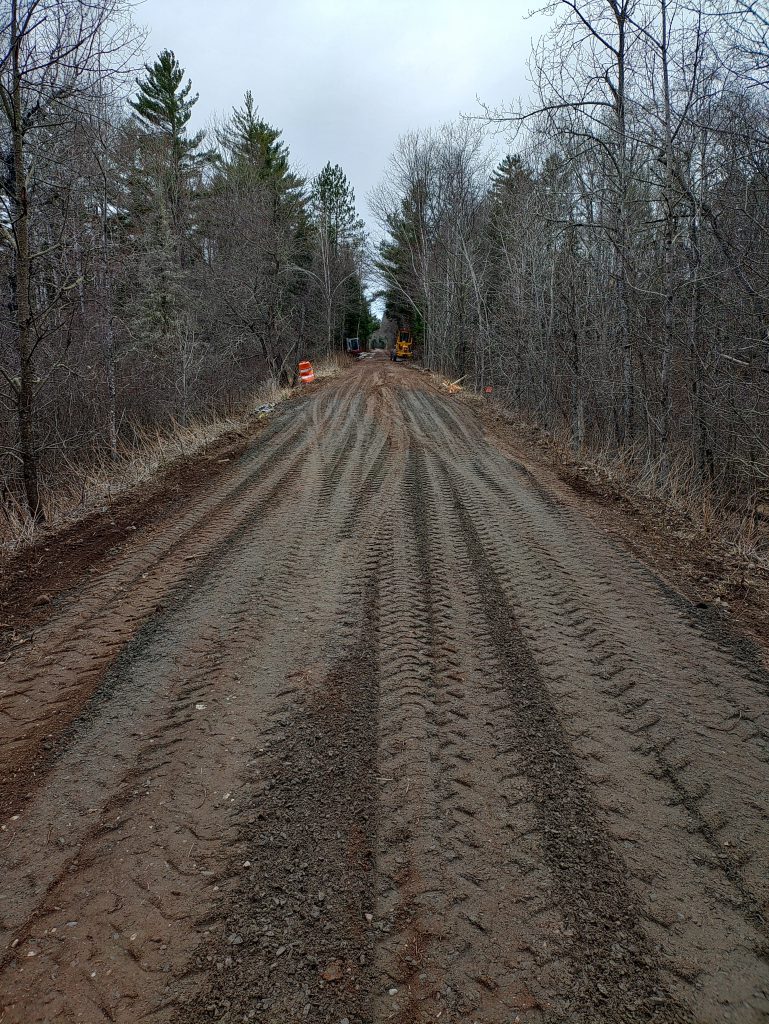
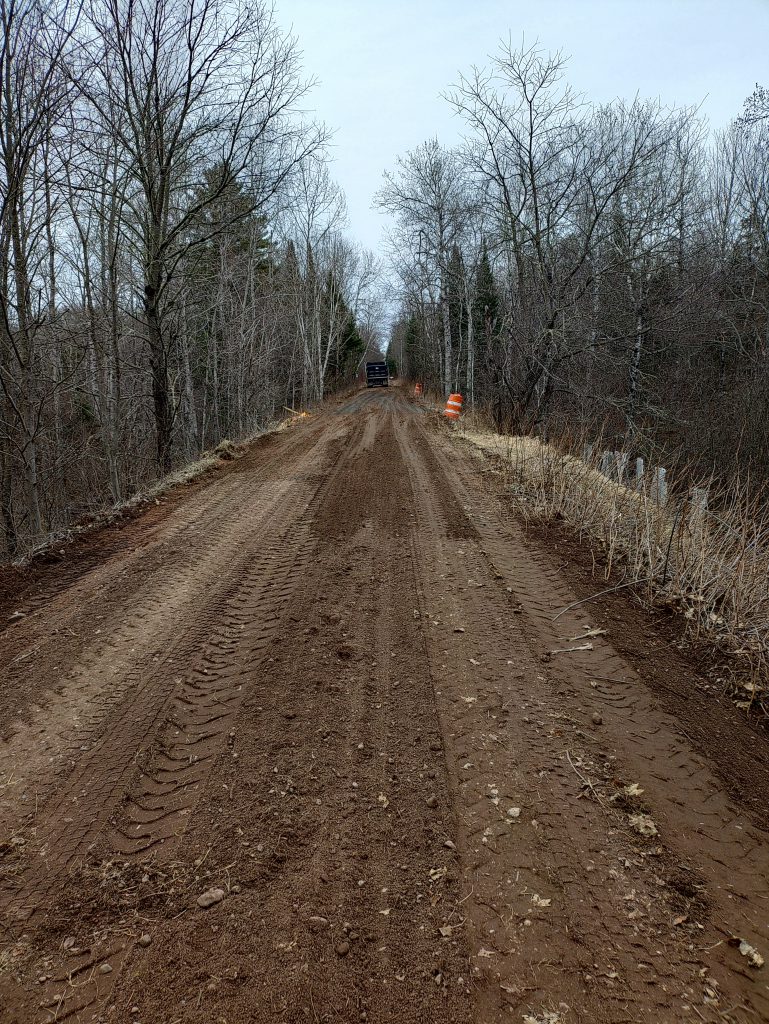
After a few years of working on improvements on the Courtney Lake Trails and campsites for horses, MI-TRALE is pleased to announce a chance for equestrians to gather and enjoy. It has been several years since MI-TRALE had such an event and we look forward to many more. Go to the link shown on this poster, to the Ottawa National Forest Website, for more information about recreation on the Ottawa.
*Credit for creating this poster goes to the newly formed group, UPTHA “Upper Peninsula Trail Horse Association”, an energetic group helping to share the Upper Peninsula horse campgrounds and trails. UPTHA has ties to horse groups across the state and will share this poster afar.
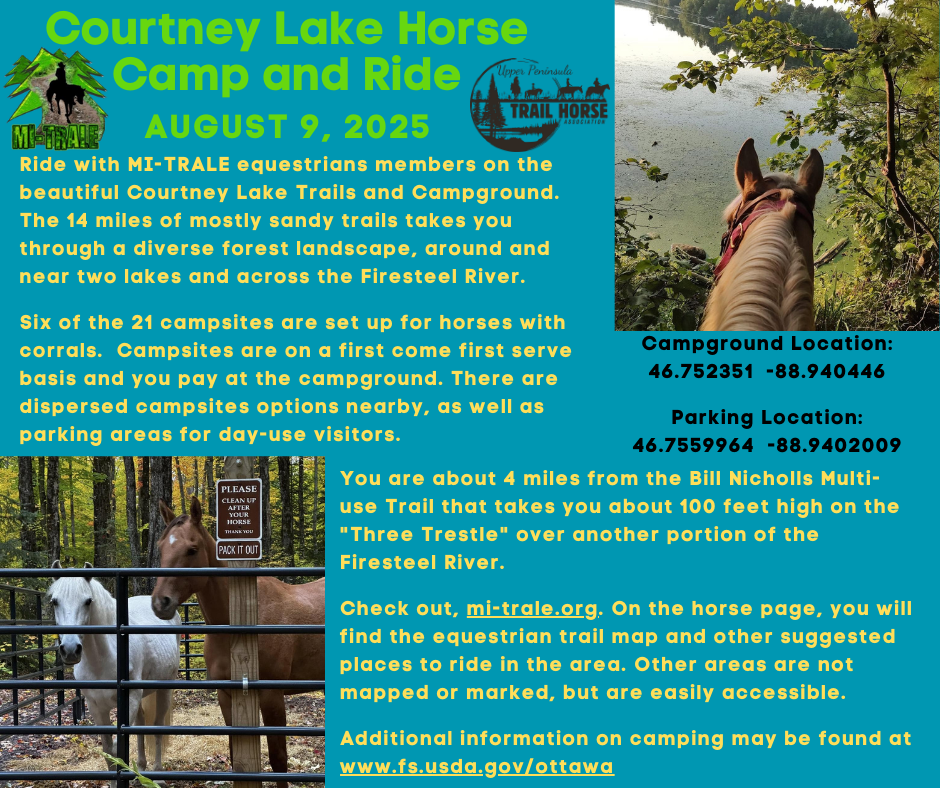
| Share or view as webpage | Update preferences |
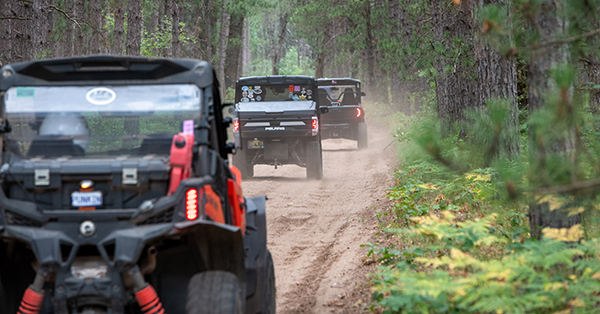 |
| Ready to ride? Buy your ORV license and trail permit today With April 1 marking the start of the 2025-26 ORV season here in Michigan, now is a great time to purchase your license and trail permit. You’ll have access to 4,000 miles of state-designated ORV trails and scramble areas, eligible county/national forest roads, state forest roads (open to ORV use) and more.These licenses and trail permits are valid for one year, which begins April 1 and ends March 31 of the following year. Buy today ► Please remember age restriction rules apply to youth under the age of 16, and an ORV safety certificate may be required when riding on public land. There are two ways to get your certificate: a classroom course or an online course. Get your safety certificate ►  Find places to ride, rules and regulations, ORV events and more at Michigan.gov/ORVinfo.And before you go, be sure to review safety and trail etiquette information at Michigan.gov/RideRight. |
